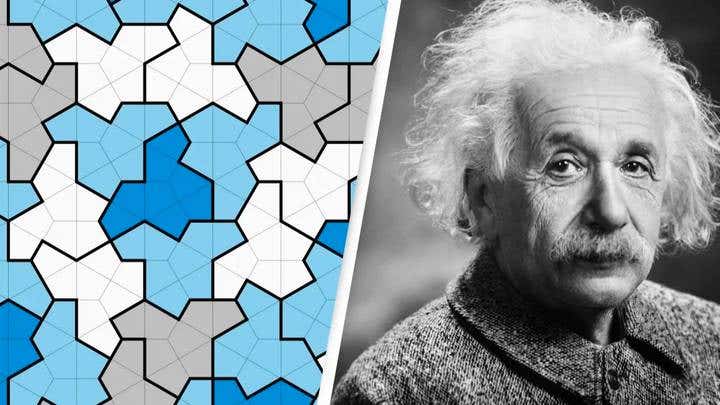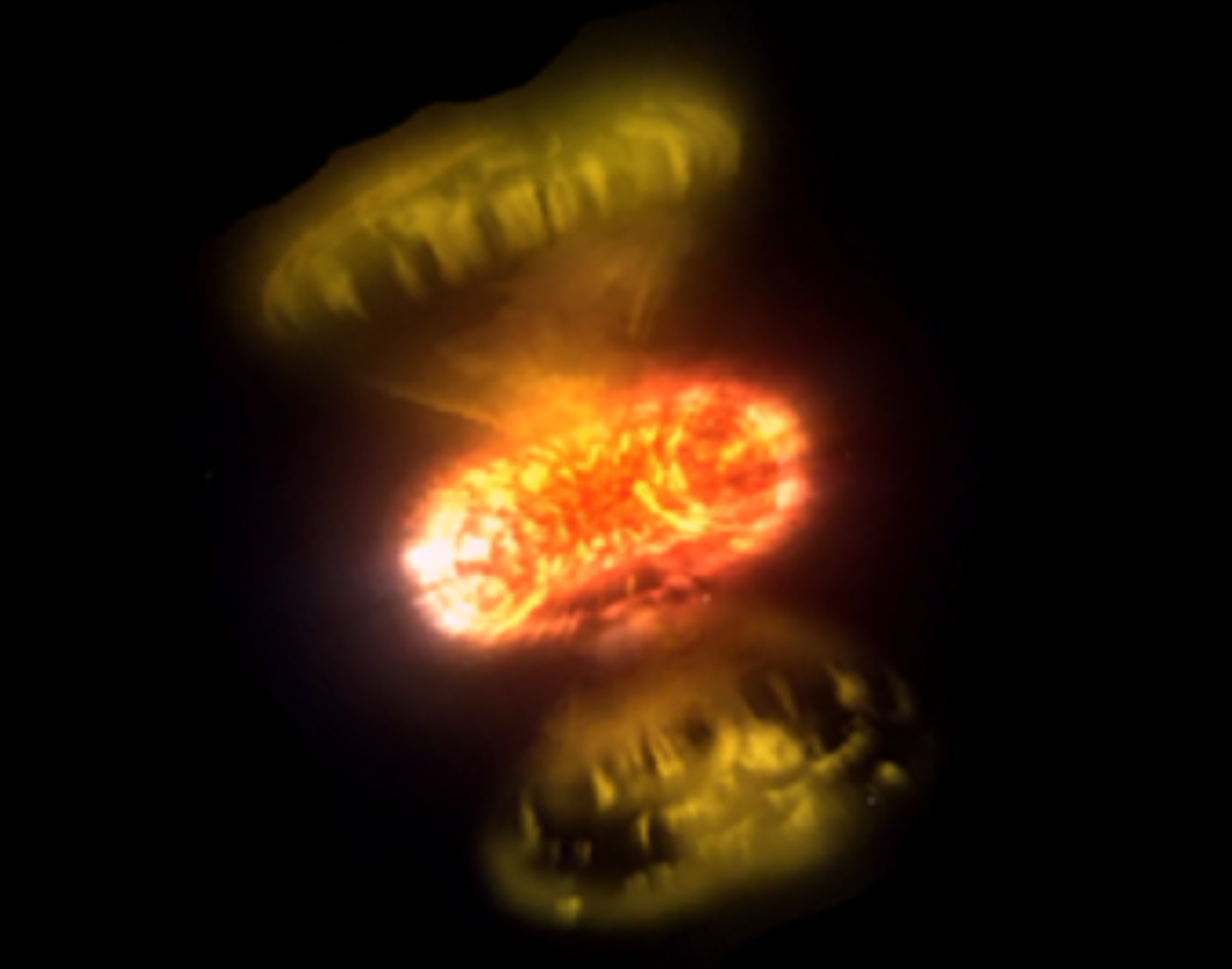‘Einstein Shape’ tiles will revolutionize material science
Researchers found the first true aperiodic monotile, a breakthrough that has the potential to revolutionize the field of material science.

[May 8, 2023: Staff Writer, The Brighter Side of News]
The discovery of the "einstein" shape, as the scientists have dubbed it, was the result of years of research and development. (CREDIT: Creative Commons)
Canadian computer scientists have discovered the first true aperiodic monotile, a breakthrough that has the potential to revolutionize the field of material science. The shape, which the scientists have named "the hat," has 13 sides and can cover a plane without ever repeating. This is a significant milestone in the field of mathematics, as it is the first time that a single shape has been found that can tile a plane aperiodically.
The discovery of the "einstein" shape, as the scientists have dubbed it, was the result of years of research and development. Craig Kaplan, a computer science professor at the University of Waterloo, and one of the four authors of the paper, said that the search for the aperiodic monotile was like "looking for a one-in-a-million thing."
In the world of mathematics, an aperiodic monotile is a shape that can tile a plane, but never repeat. The discovery of the einstein shape is significant because it is the first time that a single shape has been found that can tile a plane aperiodically.
The history of aperiodic tiles goes back several decades. The first aperiodic sets had over 20,000 tiles. Subsequent research lowered that number, to sets of size 92, then six, and then two in the form of the famous Penrose tiles. But those Penrose tiles were from 1974.
Related Stories
Since then, others have constructed sets of size two, but nobody could find an "einstein," a single shape that tiles the plane aperiodically. Could such a shape even exist? It does now.
The discovery of the einstein shape has far-reaching implications for the field of material science. The ability to create aperiodic monotiles could lead to the development of new materials with unique properties. For example, a material made up of aperiodic monotiles could have a higher strength-to-weight ratio than traditional materials.
The team of scientists proved the nature of the shape through computer coding, and in a fascinating aside, the shape doesn't lose its aperiodic nature even when the length of sides changes.
A zoomed-in patch of hat tiles, each one decorated with fine lines showing the underlying kites. (CREDIT: University of Waterloo)
"We finally got down to one!" Kaplan says.
The discovery of the einstein shape is a testament to the power of collaboration and the importance of continued research and development in the field of mathematics. The scientists involved in this project have pushed the boundaries of what was previously thought possible, and their work has the potential to revolutionize the way we think about materials and their properties.
The hat, the aperiodic monotile discovered by the team, is a complex shape that is based on a substitution system. The shape is made up of 13 sides, each of which is a different length. The length of the sides is what gives the shape its aperiodic nature. When the hat is tiled on a plane, it creates a pattern that never repeats.
A looping animated GIF similar to the animation shown above. (CREDIT: University of Waterloo)
The discovery of the einstein shape has been hailed as a significant breakthrough in the field of mathematics. It is a testament to the power of collaboration and the importance of continued research and development.
The implications of this discovery are far-reaching. The ability to create aperiodic monotiles could lead to the development of new materials with unique properties. For example, a material made up of aperiodic monotiles could have a higher strength-to-weight ratio than traditional materials.
The discovery of the einstein shape is just the beginning. The scientists involved in this project will continue to explore the properties of the hat and its potential applications in the field of material science. This discovery has opened up a new area of research, and the possibilities are endless.
An alternative patch, more zoomed out and using a warmer palette. (CREDIT: University of Waterloo)
The discovery of the einstein shape is a significant milestone in the field of mathematics. It is the first time that a single shape has been found that can tile a plane aperiodically, meaning it can cover the entire plane without repeating a pattern.
This breakthrough has been the result of years of research and exploration by a team of dedicated computer scientists. The potential applications of the einstein shape are vast, particularly in the field of material science. Its unique properties could be used to design new materials with specific properties, such as heat resistance or increased strength.
Moreover, the discovery of the einstein shape could lead to further advancements in the field of mathematics, particularly in the study of substitution systems and aperiodic tiling. It is a testament to the power of human curiosity and innovation that such a groundbreaking discovery has been made, and it will undoubtedly inspire further exploration and innovation in the years to come.
Tools and links
A preprint of the paper is available on the arXiv.
You can create your own patches of hats, and save them as PNG or SVG files, using an interactive application that runs in your web browser. You can also get your own copy of the source code (with a BSD 3-clause license). If you prefer to experiment with moving hats around and building patches manually, please see this excellent Mathigon polypad environment created by Dan Anderson.
The hat is one member of a continuous family of shapes that are all aperiodic, and that all tile the plane in the same way. We have created an animation that moves smoothly through this family of shapes. You can watch it on YouTube, or download your own copy (which you can more easily watch looped).
If you are interested in laser-cutting or 3D printing your own hats, there's a convenient collection of files giving hat outlines in various formats, assembled by Christian Lawson-Perfect.
In the paper we give two different proofs of aperiodicity. One of them relies on a computer-assisted case-based analysis. For validation purposes, we re-implemented this analysis as a Python program. You can download the source code for this program, run it yourself, and check its correctness.
Note: Materials provided above by The Brighter Side of News. Content may be edited for style and length.
Like these kind of feel good stories? Get the Brighter Side of News' newsletter.



